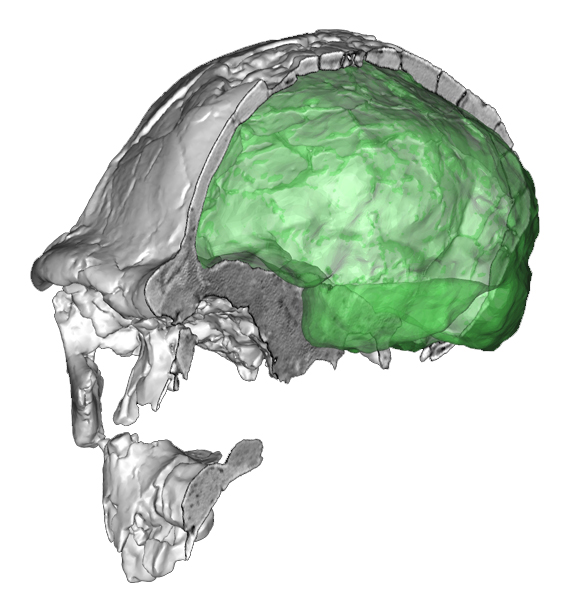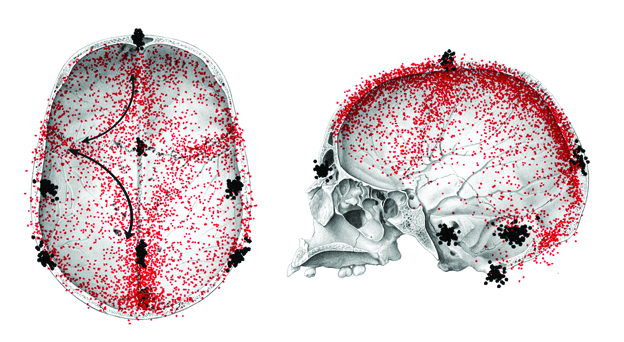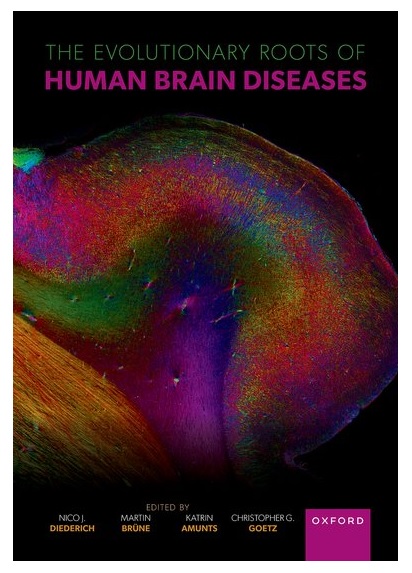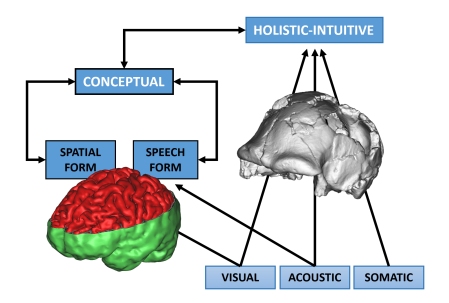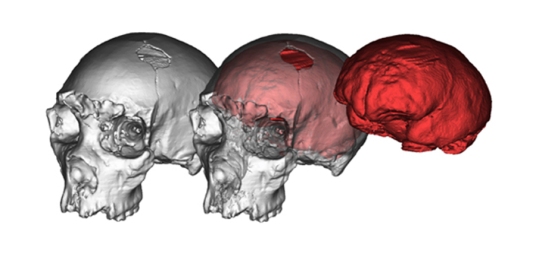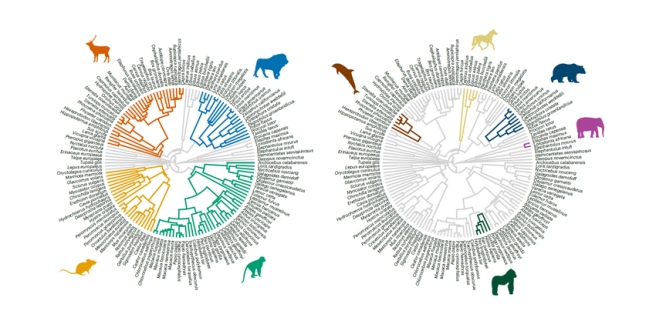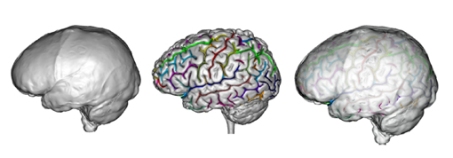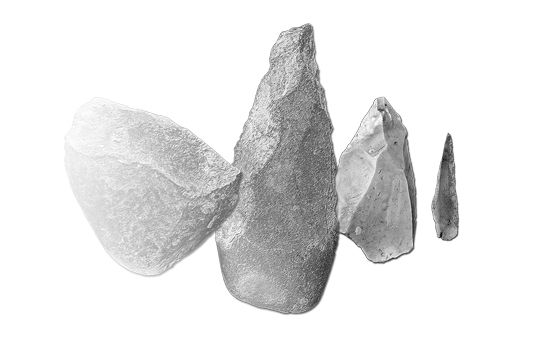
There are still disagreements on whether the increase in cultural complexity through our recent evolutionary history has been gradual or exponential, progressive or abrupt. But no one doubts it was outstanding. Technological and social complexity reveal cognitive complexity, because the boundaries of these three elements are definitely blurred and, at most, conventional. Nonetheless, the shadow of the taphonomic bias sheds worries on the most optimistic views, and caution is necessary when dealing with the pompous phylogenetic ego of our species. The absence of evidence may not be the evidence of absence. The lack of complex cultural and technological remains associated with extinct human species may be an artifice of time: the more the antiquity, the less the probability of maintaining a representative record of a past culture. At a glance, it looks like this chronological bias may have contributed, but not generated, the remarkable archaeological differences between Homo sapiens and other fossil hominids. Many early and archaic humans have been now investigated in detail for a century or more, and unexpected discoveries have only concerned local or minor differences, very relevant to understand the evolution and ecology of a species, but not to question the exceptional cognitive specialization of Homo sapiens. Most archaic and early species of the genus Homo, after all, are still associated with long periods of stasis, namely, a remarkable lack of changes when considered in a proper geographical and chronological range. In sum, the taphonomic bias may influence our perception of an extinct culture, but it is nonetheless highly improbable that H. erectus or H. heidelbergensis were using pen drives or riding bicycles.
Then, we have the special case of Neandertals, which had a brain size and a chronology very similar to H. sapiens. Modern humans and Neandertals shared a common origin, and then evolved for a similar period, at the same moment. In this case, a taphonomic bias is unlikely to explain the apparent cultural differences between the two species, mostly when dealing with the period (the last 50ka) in which the records of complex behavior for H. sapiens become increasingly abundant. However, the frequency and complexity of a behavior are key parameters to speculate on the cognitive skills of extinct populations and, therefore, we should try to understand whether the loss of cultural evidence might be an issue or not.
Despite the importance that taphonomic bias may have in prehistory, in general, it is treated like a ghost, an uncertain quantity of loss, an incommensurable confounding agent that, depending upon personal expectancy, may or may not influence substantially the corresponding conclusions. In a recent study, instead, Robert Kelly and colleagues investigated this topic quantitatively, modeling the factors involved to consider the fluctuations of the archaeological record associated with the last 50 ka. According to their model, the answer is: no, the taphonomic bias does not apparently bias so much. A welcome, nice, and elegant approach that reminds us of the necessity, in science, to quantify and measure. Quantifications and measures can be right or wrong, but they are nonetheless compulsory to bring the debate to a valuable common ground of discussion, beyond speculations and personal opinions.
However, the story is more complex than that, because our science is the product of our mind, with its cognitive, historical, economic, and social packages of preconceptions. The taphonomic bias is only one factor that might skew information we rely on. For example, what about “research bias”? Robert Kelly, who is an anthropologist at the University of Wyoming, has kindly provided his contribution to this post, by replying to a couple of questions.
- What is a “research bias” in archaeology?
Reply: Research bias comes in two forms: positive and negative. No matter what field of research you work in, from archaeology to zoology, you know that are certain areas that generate greater interest and consequently more research than others. These are the “glory fields” that can increase the likelihood of grants, publication, and public attention. This is positive research bias. In North American archaeology, the archaeology of the earliest human occupation, the Clovis culture (~13,200 to 12,900 cal BP) generates a level of attention that is the opposite of the short length of its time period. And those sites that possibly pre-date Clovis, that are possibly 14,000, 16,000, 30,000 years or even older, generate enormous public attention and guarantee publication in Nature or Science. The investigation of pre-Clovis-aged sites, in fact, has attracted several multi-million-dollar private endowments (and yet, we still have no definitive answer as to when the western hemisphere was first colonized. I have strong opinions on this question that are best left for another discussion!). In the Old World, the study of Neanderthals and Middle Paleolithic sites attracts more attention than sites of some other ages or associations. And there is negative bias: there are fields that interest fewer researchers usually because there is one period of time that is “glory field”.” For example, US archaeologists who work in the southwest strongly focus on the pueblo period (roughly post AD 700) and nearly ignore the Archaic period (which follows the Clovis period but is prior to the maize-horticulture pueblo period).
Both kinds of bias become problematic as our fields of inquiry move into the era of “big data” because we need to show that peaks or gaps in our data mean something other than research bias, otherwise we obviously risk errors in interpretation. For example, my colleagues and I have compiled a radiocarbon database of the continental US. Plotting those data (now >110,000 dates) on a map by county (land divisions within states), there are some counties that have no radiocarbon dates in our database. Is that because no one ever lived in those places prehistorically? That’s most likely wrong. Negative research bias is the most likely reason: for whatever reason, archaeologists have done less field research in those counties, and/or the research they did do, did not generate radiocarbon dates (or we failed to locate those dates in our literature searches).
How can this problem be avoided? In the US and Europe, this problem is partly mitigated by the legal requirement to conduct archaeological studies prior to construction. In the US, this is known as the field of Cultural Resource Management, and it is a response to federal (and some state and local) legislation that required, under certain circumstances, that archaeological survey and testing be conducted, and larger excavations be undertaken where they are deemed necessary. This field is required by law to concern itself with whatever it encounters, not just what the practitioners deem interesting. The problem is also mitigated by analyzing datasets with your “eyes open” to the problem and using methods that can overcome this bias. For example, we are currently analyzing spatial and temporal trends in the US by combining radiocarbon dates in terms of large watersheds, partly so that counties with no dates are overwhelmed in analysis by those that do.
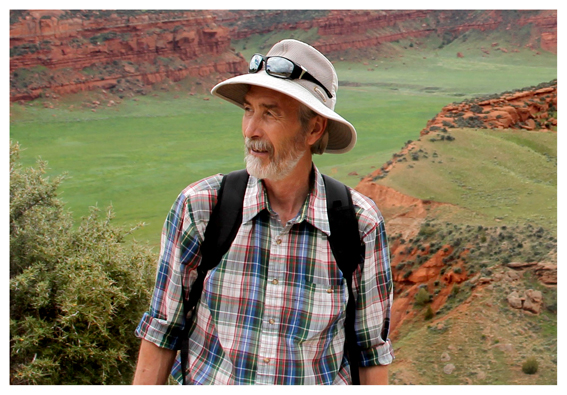
- Are there other confounding factors that might be relevant in archaeology?
Reply: Yes! Another confounding factor is discovery bias, which can also have negative and positive forms. The nature of the record left behind may bias an archaeologist to discover sites of a particular age and to not find sites of other ages. For example, Clovis peoples hunted some “megafauna,” large beasts such as mammoths, mastodons, and possibly horses, camels, and giant ground sloths. (All of these animals became extinct in the western hemisphere at the end of the Pleistocene, about 12,900 years ago.) Many Clovis-age sites have been found by lay persons, who, while out walking, notice large bones, too large to be domesticated cattle or modern bison, protruding from the side of an arroyo or stream cutbank. In fact, my colleagues and I are working on a Clovis site in my home state of Wyoming that was found in exactly such a fashion. Some archaeologists suggest that this method has biased our discovery to sites with the bones of megafauna, and consequently, has biased our interpretation of Clovis subsistence toward heavy dependence on megafauna. Maybe that’s a function of discovery bias. (One archaeologist said “Clovis hunters probably killed one mammoth in their lifetimes and never stopped talking about it!”). Sites that leave behind physically significant ruins, such as Maya temples or, in the American southwest, 800-room pueblos, are easier to locate than small, temporary hunter-gatherer camps consisting of a few ephemeral hearths and a scatter of stone tool manufacture waste flakes and shattered animal bone, all of which are more quickly buried than a three-story, stone-walled pueblo).
And Mother Nature can hide sites. Sites can become deeply buried, e.g., along floodplains, and the older the site the more deeply buried it can be. Obviously, this can bias the archaeologist to find young sites rather than old sites. Archaeologists can walk over them, and our standard discovery tools – augers or even backhoes – may still not reach the appropriate depth. Construction projects also may not excavate sufficiently deep to make inadvertent discoveries.
***
I am sincerely grateful to Robert Kelly for his kind availability, and to Petra Jelinek for calling my attention to these topics.
